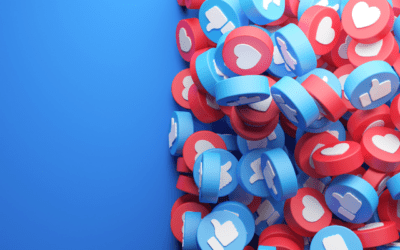Understanding and anticipating your customers’ desires is crucial to the health of your business. Reviewing customer history and feedback gets you part of the way there but to build a marketing strategy with precision, you’ll need to be able to predict market trends. Always a mix of art, science, and luck, trend-casting has never been more precarious. Despite this, your future survival depends on being able to zero in on your customers’ evolving buying behaviours — even in a pandemic. At Hop Skip, we don’t know the future, but we can give you a head start. Read on for some of the B2B marketing trends we expect to see in 2021.
#1. Virtual events
COVID-19 is showing no sign of slowing down which means most trade shows, conferences, and other large in-person events will have to move online. In 2021, Hop Skip clients are both organizing virtual events and attending them. From every perspective, these virtual events are becoming increasingly sophisticated. Participants expect a flawless online experience, and vendors and sponsors expect measurable results and quality interactions with attendees.
#2. Content at every step of the buyer’s journey
Nowadays, consumers research and interact with businesses almost exclusively online. It’s never been more important for small- and medium-sized businesses to have top-notch marketing and sales content and collateral, ideally produced and available for every stage of the buying journey. Think about the basic stages you go through when making a purchase: education, comparison, and purchase. For B2B purchases, this is usually more complex, and often involves multiple stakeholders, some of whom require different types of information. Procurement, for instance, will want different information from those in IT or production. Your job is to be prepared with the right content, targeted to the right audience, and distributed at the right time. Your content can and should nurture consumers throughout the buyer journey towards purchase.
#3. Websites and e-commerce
If you think about your own experiences making online purchases, chances are you’ve had some bad ones. Even more likely, that was enough to give you a negative impression of the company as a whole. Consumers expect a seamless user experience with straightforward and secure online payment options, and it’s your job to give it to them.
Many small- and medium-sized businesses will undergo some form of digital transformation in the coming year. That is, they’ll look to improve on their digital capabilities and “integrat[e] ‘always-on’ digital marketing activities with brand and product marketing in the business.” Already an important strategy for keeping your business healthy, digital transformation has been brought even closer to the forefront by the pandemic.
The online space is as crowded as it’s ever been so if you want to compete, think about which website enhancements and e-commerce updates you’ll need in 2021.
#4. Video
Video is as popular as ever with its demand only growing. In 2020, an estimated 87% of marketing professionals used video, and 54% of consumers want to see more of it from brands. Polished, professional video is a strong tool in your belt when you’re looking for content along the buyer’s journey. Brands can no longer dip their toe in video, so plan for it in 2021.
Unsure how you can use video in your marketing/sales work? Here are two examples from our work this year:
Product overview video – a short (roughly 90 second) descriptor of your product/service, like the video shown here.
Vlog posts – video-blog posts to educate your customers. This is one of a series of small business tips we wrote and filmed for iCapital.
#5. Social media
Yes, social media works for B2Bs! Many of the same strategies that work so well in B2C can be geared towards a B2B audience. Take, for example, influencer marketing. Recommendations and endorsements are powerful buying incentives, no matter your business.
Consider creating a curated private community if you haven’t done so already. Private communities offer your audience the opportunity to network, speak their minds, share their concerns, and troubleshoot issues with other like-minded individuals. Bonus: These conversations give your business incredible insights into your customers.
Finally, social commerce, the use of social media sites to sell products, is also increasing in popularity as a way to generate or support sales. Embracing social media as a tool for brand awareness and communication with your audience should be paramount in 2021.
#6. Data-driven decisions and owned data sources
Data-driven decisions are decisions based on solid information. Every single marketing decision you make should be driven by data insights. Businesses have the ability to mine massive amounts of valuable data that can make their business decisions strategic but getting at it is not automatic. Think about it: You don’t own your Facebook page or LinkedIn page. The data stored there is not yours, and that’s a problem that’s about to get worse. Ad blockers and the impending end to third-party cookies are going to make it even more difficult to extract data.
Going into 2021, it’s going to be increasingly crucial to own your data sources so that you can be completely up-to-date and have the ability to make data-driven decisions instantly. Plan to extract as much data as possible from third-party platforms. Strategize to strengthen channels you do own, like email, your website, or your podcast. And then begin building your audience by creating valuable content you can trade for their data.
Small- and medium-sized businesses are understandably trepidatious going in 2021. A pandemic, market upheaval, and slow or faltering sales in 2020 have set an unstable stage. There is hope, however, in the very same business practices you’ve always used. There is nothing new about the need to understand your customers’ desires and the ability to respond to them. Consider these six marketing trends as you go into the new year and build a stronger customer connection.


